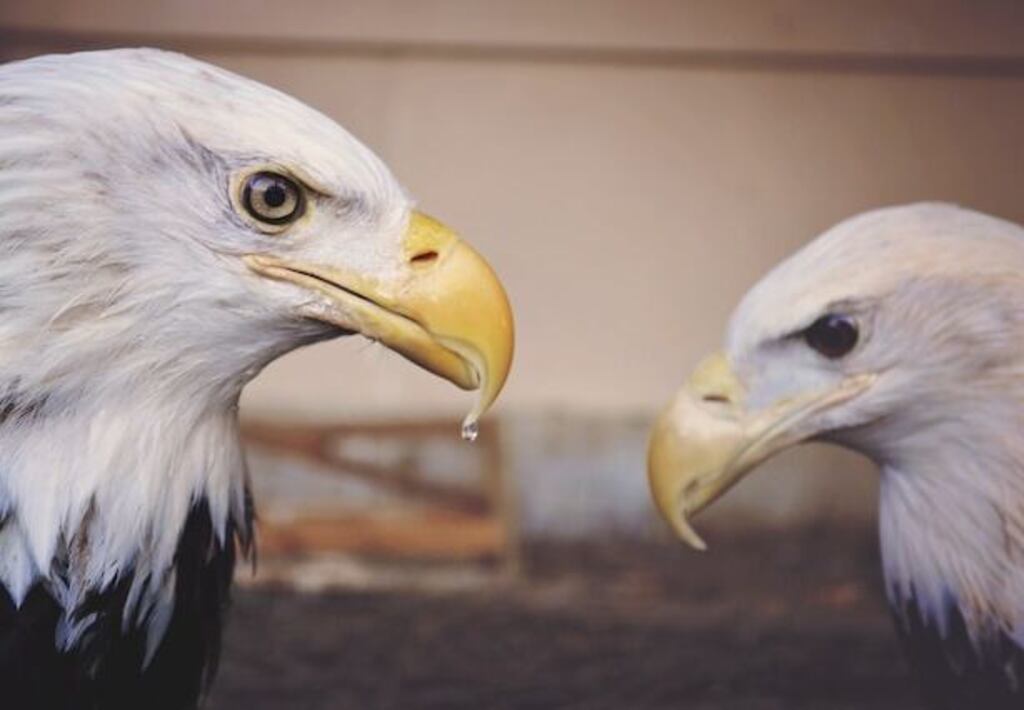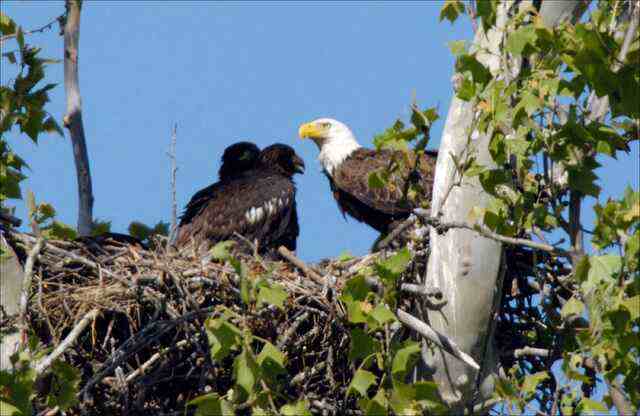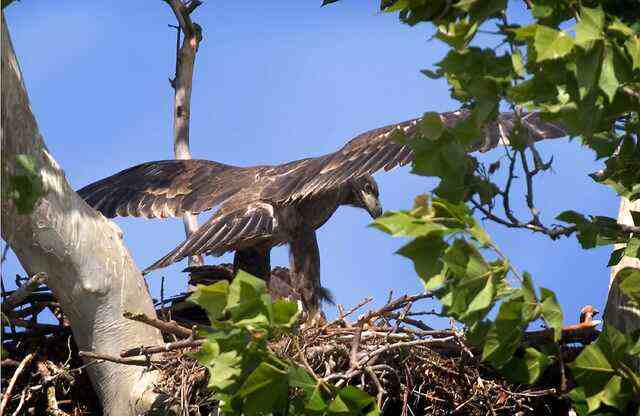How Do Eagles Copulate? Prepare to be captivated by the majestic dance of eagle romance, as they soar high above, their wings intertwined in a mesmerizing display.
Beneath the surface of this breathtaking sight lies the fascinating world of eagle copulation, where courtship, fertilization, and the challenges of reproduction intertwine.
In this article, we unravel the intricacies of eagle copulation, from the grace of courtship to the delicate process of egg-laying.
Discover the captivating challenges these magnificent birds face in their quest for successful reproduction, and the conservation efforts dedicated to safeguarding their future.
Whether you’re an avid bird enthusiast or simply curious about the secrets of animal reproduction, this article will take you on a comprehensive journey into the realm of how eagles copulate.
Prepare to be awed by the wonders of nature’s love story that unfolds high above the treetops. Let’s embark on this soaring adventure together!
Table of Contents
- 1 Key Takeaways
- 2 Courtship and Pair Bonding
- 3 How Do Eagles Copulate
- 4 The Act of Copulation
- 5 Fertilization and Egg-Laying
- 6 Incubation and Hatching
- 7 Development of Eaglets
- 8 Challenges to Eagle Reproduction
- 9 Conservation Efforts
- 10 Eagle Copulation in Popular Culture
- 11 Frequently Asked Questions
- 12 Conclusion
- 13 Author
Key Takeaways
- Eagles engage in bonding rituals during courtship to establish a strong pair bond, which is crucial for successful copulation and raising offspring.
- Copulation techniques vary, but typically occur on a perch and last only a few seconds. Mating rituals may occur multiple times over the breeding season.
- Female eagles lay 1–3 eggs per season, which are fertilized by the male’s sperm. The incubation period for eagle eggs is approximately 35 days, with the female responsible for incubating while the male provides food and protection.
- Challenges to eagle reproduction include habitat loss, fragmentation, and climate change, which can lead to decreased food availability, increased predation risks, altered habitats, and disrupted migration patterns. Conserving eagle habitats and addressing root causes of habitat loss and fragmentation are essential for long-term conservation.
Courtship and Pair Bonding
During courtship, eagles engage in elaborate bonding rituals to establish a strong pair bond. These rituals involve impressive aerial displays, vocalizations, and body postures that communicate the eagles’ intentions and establish their territory.
Eagles may engage in territorial disputes with other birds during this time, as they protect their chosen nesting sites and assert their dominance.
The pair bond that is established during courtship is crucial for successful copulation and raising offspring.
Now that the pair bond has been established, the eagles are ready to mate and produce offspring.
How Do Eagles Copulate
Eagles copulate through a series of aerial maneuvers involving locking their talons mid-air and performing mid-flight courtship displays.
This intimate act ensures successful fertilization for egg production. The intricate dance of eagle copulation showcases their strength, grace, and dedication to continuing their majestic lineage.
The Act of Copulation
The intricate process of avian reproduction involves a fascinating display of aerial acrobatics and precise coordination between the male and female partners.
Eagles have a unique courtship and bonding ritual that involves elaborate displays of flight patterns and synchronized movements.
Once the pair has bonded, the act of copulation begins. Copulation techniques in eagles vary, but most commonly, the male and female will perch on a branch or rock and mate.
The act itself lasts only a few seconds, but the entire process can take several hours.
Mating rituals may occur multiple times over the course of a breeding season, with pairs engaging in copulation every few days.
Following copulation, the female will lay eggs in the nest, which will be fertilized by the male’s sperm. This marks the beginning of the next phase in the process of eagle reproduction.
Fertilization and Egg-Laying
Fertilization and egg-laying are critical stages in the process of avian reproduction, with the female eagle laying one to three eggs per season.
After copulation, the female eagle’s ovaries release an ovum that travels to the oviduct, where it may be fertilized by sperm from the male eagle.
Once fertilized, the egg is coated in a protective layer of albumen, then a hard outer shell, and passed through the female’s cloaca.
The egg-laying process can take several hours and is typically completed every few days until the clutch is complete.
The incubation period for eagle eggs is approximately 35 days, with the female eagle responsible for incubating the eggs while the male provides food and protection.
During this time, the embryo develops, and the chick grows inside the egg until it is ready to hatch.
Understanding the process of egg fertilization and incubation is crucial for eagle conservation efforts, as it allows researchers to monitor and protect eagle populations.
In the subsequent section about incubation and hatching, we will explore the process of chick development and the factors that influence successful hatching.
Incubation and Hatching
This subtopic focuses on the nesting habits and parental care of eagles during the incubation and hatching period. Eagles are known to be highly devoted parents that take great care of their young ones.
Their nesting habits vary depending on the species, environmental conditions, and availability of resources.
Understanding the nesting habits and parental care of eagles is crucial for conservation efforts and management of their habitats.
Nesting Habits
Remarkably intricate and well-planned, eagles’ nesting habits involve selecting a location that is high enough to avoid predators and constructing a sturdy nest that can withstand harsh weather conditions.
The mating rituals and breeding behavior of eagles result in the creation of the nest, which is typically built in a forked tree branch or on a rocky outcropping.
The nest is built over a period of several weeks, with both male and female eagles working together to carry sticks and other materials to the site.
The nest can grow up to 10 feet wide and 20 feet deep, with some nests weighing up to 2 tons.
The sight of a majestic eagle soaring high above the treetops, or perched atop a rocky cliff, is a symbol of freedom and independence.
Eagles’ nesting habits are a testament to their strength, resilience, and dedication to their offspring.
As we delve into the subsequent section about parental care, we will see how eagles’ dedication to their young extends beyond the initial nesting period.
Parental Care
The dedication of eagles to their offspring is evident in their careful and attentive parental care. The importance of parental care in eagles cannot be overstated, as it plays a crucial role in the survival and development of their offspring.
For instance, adult eagles take turns incubating eggs and feeding their young, with the male eagle bringing food to the female, who then feeds the eaglets.
Furthermore, both parents protect their offspring from predators and harsh environmental conditions.
The effects of parental care on offspring development are significant, as it enhances their growth and survival rates.
Through parental care, eaglets learn essential skills, such as hunting and flying, which are vital for their future survival.
In summary, the parental care of eagles is a critical aspect of their reproductive success, and it sets the foundation for the development of their offspring.
The following section will further explore the development of eaglets without repeating the same information.
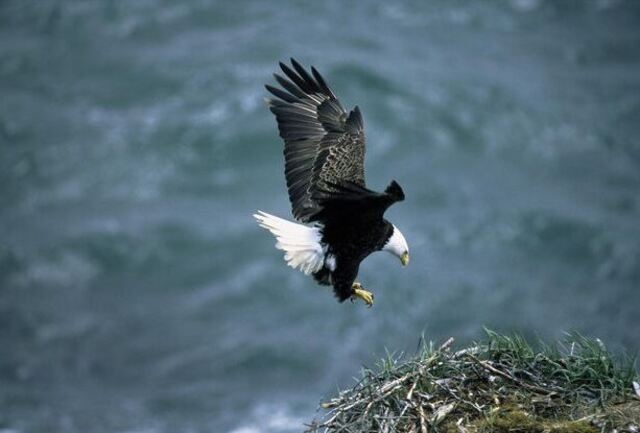
Development of Eaglets
The development of eaglets is a complex process that involves eagle parenting through various stages of growth.
From the moment the eggs are laid, the parents provide warmth and protection to ensure the survival of their young.
The eaglets hatch after about 35 days and are initially covered in soft down feathers.
Over time, they grow stronger and develop flight feathers, learning to flap their wings and eventually take their first flights.
During this period, the parents continue to provide food and guidance, teaching their young how to hunt and defend themselves.
However, challenges to eagle reproduction, such as habitat loss and pollution, threaten the healthy development of eaglets and the survival of the species as a whole.
Challenges to Eagle Reproduction
The reproduction of eagles faces numerous challenges, including habitat loss and fragmentation, as well as climate change.
Habitat loss and fragmentation are major threats to eagles, as they require large areas of undisturbed habitat to breed successfully.
Climate change, on the other hand, affects the availability and quality of prey, which in turn affects the breeding success of eagles.
Habitat Loss and Fragmentation
Habitat loss and fragmentation pose significant challenges to the reproductive success of eagles, as these factors can disrupt their nesting and foraging habitats, leading to decreased food availability and increased predation risks.
The impact of human activities, such as deforestation and urbanization, has resulted in the loss of critical eagle habitats, forcing eagles to adapt to new environments or face extinction.
Benefits of reforestation, such as restoring eagle habitats, can help mitigate the negative effects of habitat loss and fragmentation.
However, it is essential to address the root causes of habitat loss to ensure the long-term conservation of eagle populations.
Climate change, for instance, poses additional threats to eagle habitats, and it is crucial to incorporate climate change mitigation strategies into eagle conservation efforts.
Climate Change
Climate change is a significant threat to the survival of eagle populations, as it can alter their habitats and food sources, leading to decreased reproductive success and increased mortality rates.
The impact of climate change on eagles can be seen in the reduction of their prey, such as fish, due to changes in water temperature and availability.
Additionally, rising global temperatures can cause changes in migration patterns, which can disrupt breeding cycles and affect the availability of suitable nesting sites.
Despite these challenges, eagles have shown some adaptation to changing environmental conditions, such as altering their hunting strategies and shifting their breeding locations.
Conservation efforts are crucial in mitigating the effects of climate change on eagle populations, as well as protecting their habitats and food sources.
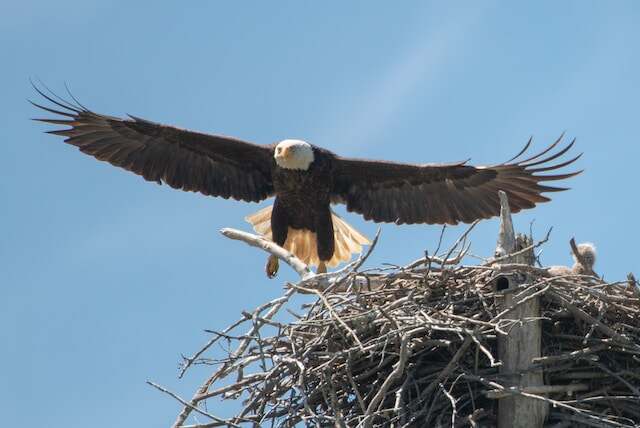
Conservation Efforts
Conservation efforts for eagles have focused on protecting nesting sites and implementing reintroduction programs.
Protecting nesting sites involves preserving critical habitats and reducing human disturbance.
Reintroduction programs involve releasing captive-bred eagles into the wild to increase their population and genetic diversity.
These efforts have been successful in increasing eagle populations in some areas, but ongoing monitoring and conservation efforts are still necessary to ensure their long-term survival.
Protection of Nesting Sites
The protection of nesting sites is crucial for the successful reproduction of eagles, as statistics show that up to 70% of eagle nests are destroyed or disturbed by human activity.
It is of utmost importance to preserve these habitats, as the eagles depend on their nest locations to raise their young and continue their existence.
Here are four devastating impacts of human interference on eagle nesting sites:
- Reduced breeding success and survival rates of young eaglets
- Disruption of courtship and mating rituals, leading to a decline in reproduction
- Increased vulnerability to predators due to the loss of natural cover and protection
- Displacement of the eagles from their natural habitat, leading to a decline in population size.
Eagle nesting sites must be protected from human encroachment and disturbance, as they are critical for the survival of these majestic birds of prey.
In the subsequent section about reintroduction programs, we will explore the efforts to restore the eagle population to its former glory.
Reintroduction Programs
Reintroduction programs have been implemented in various regions around the world to restore the populations of eagles.
These programs aim to reintroduce eagles into their natural habitats, where they can thrive and contribute to the ecosystem.
The benefits of reintroduction programs are numerous, and they include the restoration of ecological balance, the preservation of biodiversity, and the protection of endangered species.
Success stories of reintroduction programs are evident in the increase of eagle populations in various regions.
For instance, the bald eagle population in the United States has increased from less than 500 pairs in the 1960s to over 10,000 pairs today.
This success can be attributed to the implementation of reintroduction programs and the protection of nesting sites.
Such successes inspire hope for the future of eagle populations and the environment as a whole.
Moving forward, it is crucial to continue implementing reintroduction programs and to protect natural habitats to ensure the survival of eagles and other endangered species.
This is especially important given the important role eagles play in popular culture and as a symbol of freedom.
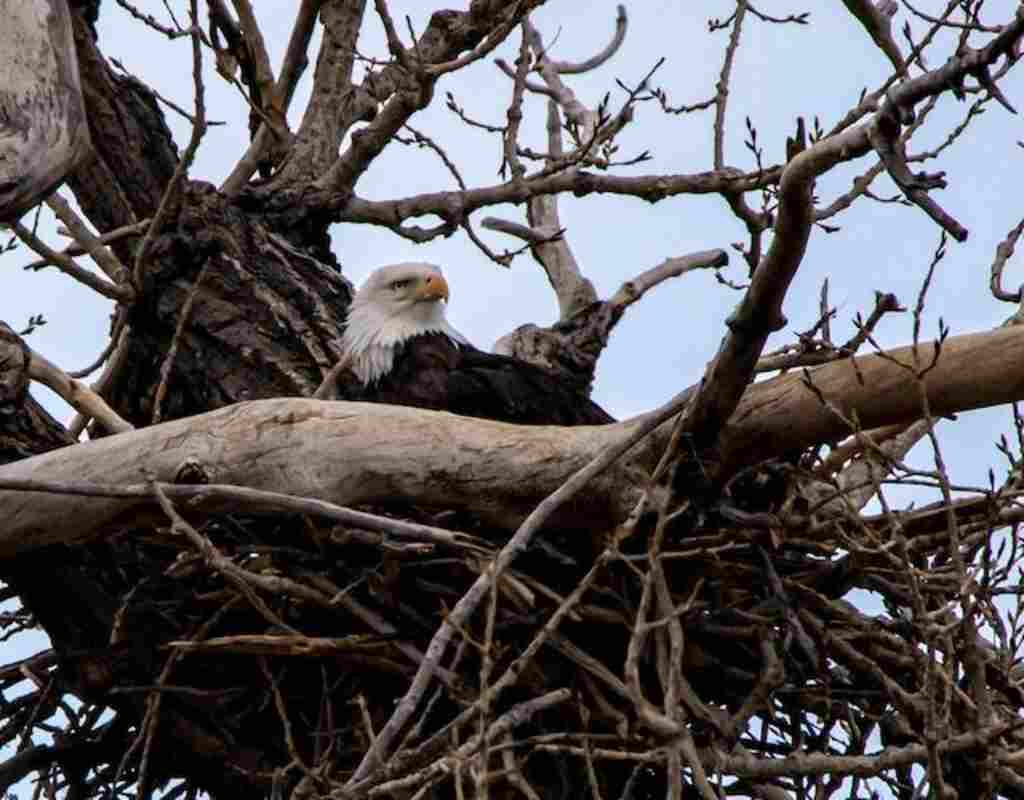
Eagle Copulation in Popular Culture
Eagle copulation has long been a topic of interest in various forms of popular culture, particularly in the areas of mythology and symbolism, as well as depictions in art and literature.
Mythology and symbolism have often associated eagles with power, freedom, and strength, making them a popular subject in various cultures across the world.
In art and literature, eagles have been depicted in various ways, ranging from romanticized and symbolic representations to more realistic and scientific depictions.
Mythology and Symbolism
Symbolism and mythology surrounding eagles can be traced back to ancient civilizations such as the Greeks, Romans, and Egyptians.
These cultures perceived eagles as powerful creatures, representing strength, courage, and freedom. In Greek mythology, Zeus, the king of gods, was often depicted as an eagle.
The Romans saw eagles as a symbol of power and used them on their banners during battles.
The Egyptians believed that eagles were connected to the sun, and they were associated with the god Horus.
Across different cultures, eagles have been interpreted in various ways, but their cultural significance remains consistent.
To illustrate this, I have created a table that shows the symbolism interpretation and cultural significance of eagles in different cultures.
| Culture | Symbolism Interpretation | Cultural Significance |
|---|---|---|
| Greek | King of gods | Power |
| Roman | Symbol of power | Strength |
| Egyptian | Connected to the sun and god Horus | Freedom |
Eagles have also been a popular subject in art and literature, and their symbolism has been explored in depth. In the next section, we will examine how eagles have been depicted in various forms of art and literature.
Depictions in Art and Literature
Moving on from the previous subtopic of mythology and symbolism, we now delve into the cultural significance of how eagles copulate, specifically looking at depictions in art and literature.
Throughout history, eagles have been revered for their strength, majesty, and power, and their mating rituals have been frequently depicted in various forms of art and literature.
Ancient Egyptian hieroglyphics, Greek pottery, and Native American totems are just a few examples of how eagles have been depicted in art.
In literature, eagle courtship has been described in great detail, such as in the poem ‘The Eagle’by Alfred Lord Tennyson.
These depictions not only reflect the cultural importance of eagles but also offer insight into the beliefs and values of different societies.
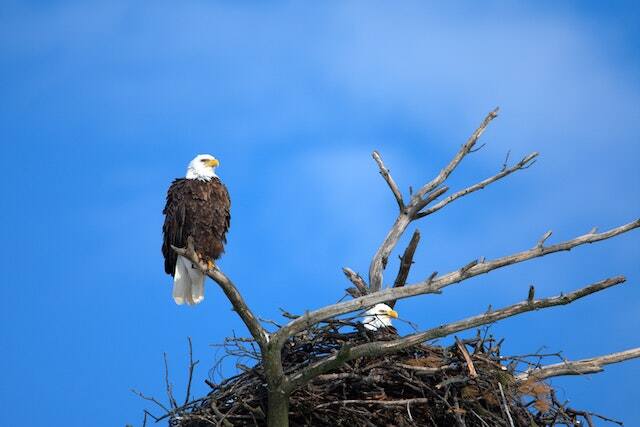
Frequently Asked Questions
How long do eagles copulate for?
Eagles’ copulation duration varies, but typically lasts only a few seconds. Reproductive behavior and breeding strategies vary among species, with some engaging in monogamy and others in polygyny. Eagles’ mating rituals involve aerial displays and courtship flights.
Do eagles mate for life?
Eagles exhibit varying mating habits, with some species being monogamous while others are promiscuous. Mating rituals also differ among species, with some engaging in aerial displays and others performing courtship dances.
How do eagles choose their mating partner?
Eagles engage in complex mating rituals which involve aerial displays, vocalizations, and physical interactions. Mate selection is based on physical attributes, territorial dominance, and successful hunting skills. Partner fidelity is crucial for successful breeding and raising offspring.
What factors can affect eagle reproduction success?
The success of eagle reproduction can be influenced by breeding habitat and environmental factors. These include availability of prey, weather conditions, and human disturbance. Understanding these factors is crucial for conservation efforts and ensuring the long-term survival of eagle populations.
Can eagles copulate in flight?
Eagles engage in mid-air acrobatics as part of their courtship rituals, but there is no scientific evidence to suggest that they copulate in flight. Further research is needed to fully understand the mating behavior of eagles.
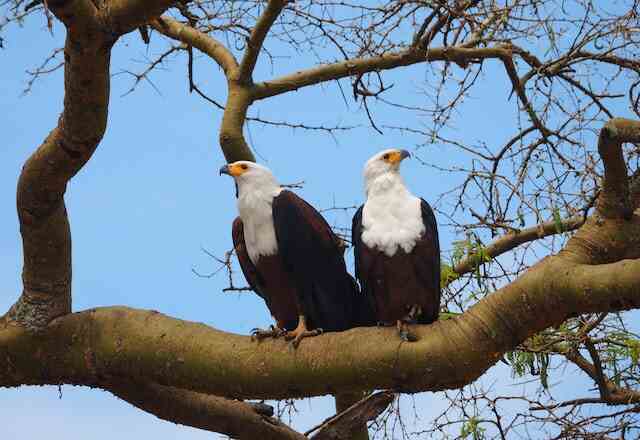
Conclusion
In conclusion, eagle copulation is a complex process that involves courtship, mating, and egg-laying. Eagles are known for their monogamous behavior and strong pair bonding, which can last for many years.
The act of copulation can occur on the ground or in the air, and involves a quick and efficient transfer of sperm from the male to the female.
After fertilization, the female will lay one to three eggs, which are then incubated for several weeks until hatching.
Despite their impressive reproductive abilities, eagles face many challenges in the wild, including habitat loss, hunting, and pollution.
Conservation efforts have been put in place to protect these magnificent birds and their habitats, such as the Endangered Species Act and various breeding programs.
Additionally, eagle copulation has been a popular subject in popular culture, appearing in literature, art, and film.
Overall, the study of eagle copulation is an important aspect of understanding these fascinating birds and their behavior.
Through research and conservation efforts, we can continue to protect these majestic creatures and ensure their survival for generations to come.

